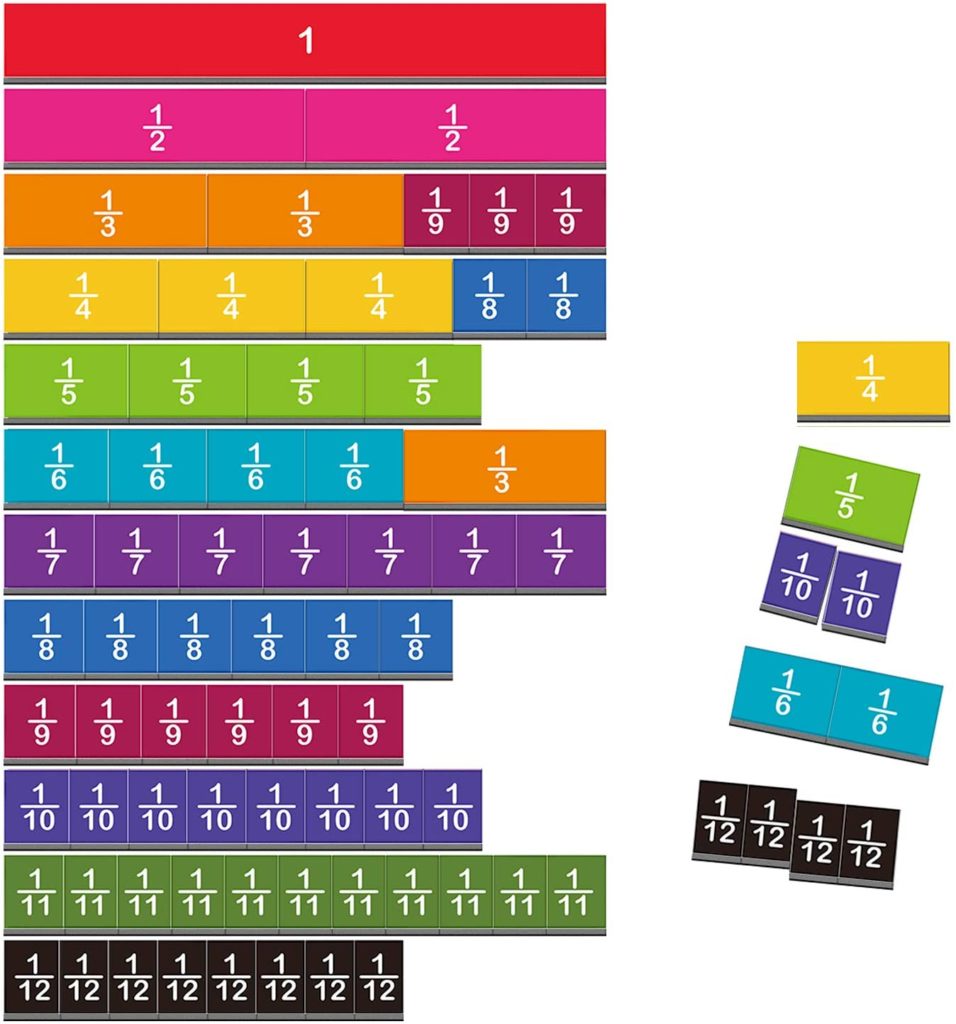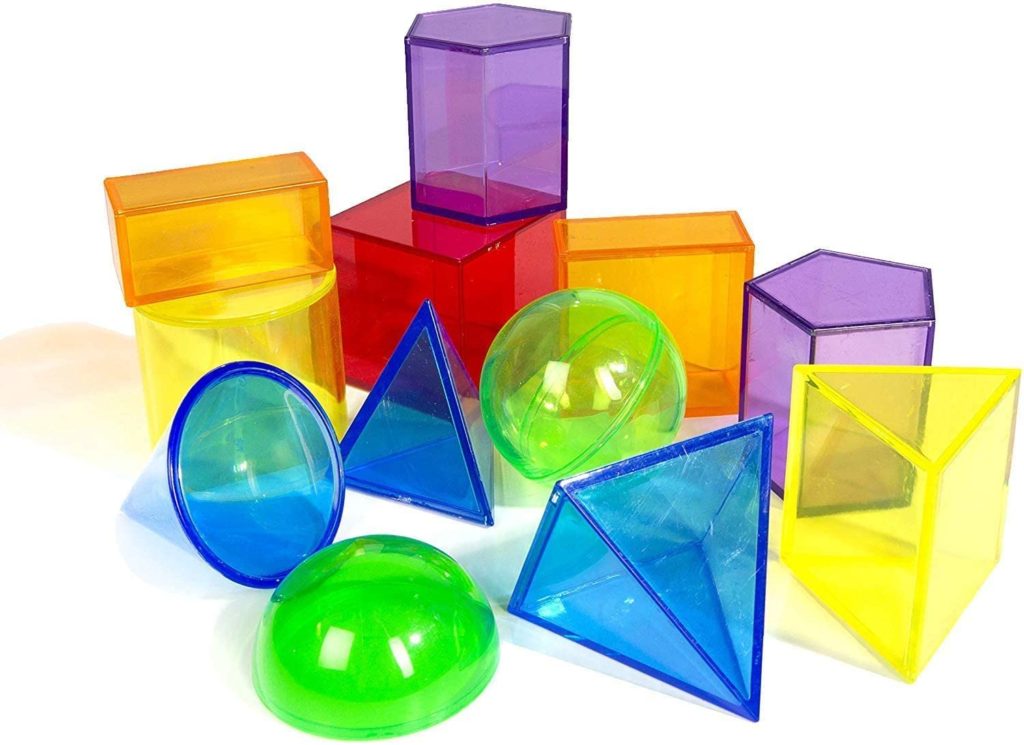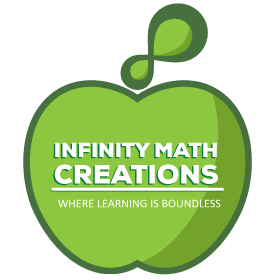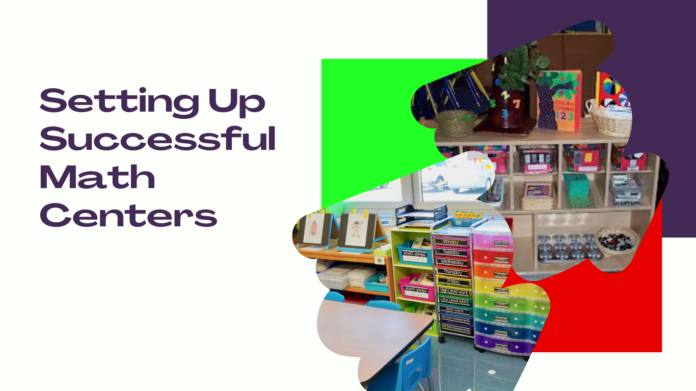So, you’ve decided you want to start using math centers in your classroom. Great!
Setting up math centers for your students will help you accomplish goals while allowing them to improve their word problem-solving skills and enhance their mental math skills.
Setting up successful math centers needn’t be an overwhelming task. If you continue reading, you’ll discover a step-by-step guide to creating and differentiating math centers, some of the supplies you’ll need, and ways to organize and store them.
By the end of this article, you’ll be able to set up math centers in your classroom that your students will look forward to using.
What are Math Centers?
What are math centers in a nutshell? They are an opportunity for the student to practice a set of math skills under the guidance of skillful teachers.
Math centers are extremely beneficial for both you and your students. First and foremost, they give students a chance to practice and apply strategies and skills you’ve already taught in the classroom, and they allow you to gauge your students’ understanding of the math skills they’ve learned.
Math centers will:
- Set a foundation for the student to review and enhance a set of math skills. They provide meaningful and independent practice based on student needs.
- Include a variety of math activities
- Integrate engagement and problem solving
- Hold students accountable for their work when they are engaged in it
- Allow teachers to assess student math understanding and skills
The advantage of math centers are numerous. Most of the teachers I’ve spoke with said that their biggest challenges were:
- Setting up math centers
- System for using math centers
Below are a few things you can do to set up effective math centers quickly and easily this year!
How to Setup Math Centers
Your math center and classroom layout is totally dependent upon you, but you can implement a few tips to make the process easier.
Step One: Decide How Many Centers You Want
There is no right or wrong choice here. When deciding how many centers to create, consider how many students you want at each station and how much time you want each group to spend at each station. For example, if you have an hour for math center fun, you might set up four stations, which allows each group.
The size and location of your centers depend upon the following factors:
- Classroom size
- Number of math learning setup you to incorporate
- The number of students in your class.
- The number of students in the center at a time.
I’ve seen as many as ten and as few as three stations. Because my students were already familiar to four areas, I decided on four. Below is a chart of the station cadence:
| Station 1 | Station 2 | Station 3 | Station 4 |
| Math activity with a partner | Math activity for on your own | Time with Teacher | Hands-on activity with manipulatives |
| 15 min | 15 min | 15 min | 15 min |
Step Two: Decide the Activities for Each Station
- What activities do you want your students to do?
- Will they work individually or in small groups?
- Is the plan for them to work at their desks or a large table?
- Will you spend time with each group to guide them and answer questions?
- Will there be fun games and prizes?
There are a lot of activities you can use to get kids engaged and interested in math, so don’t be afraid to change up the activities from time to time so your students stay interested and look forward to math center day.
Step Three: Prepare Ahead of Time
A lot is going on in math centers, so setting them up takes time. Don’t wait until just before center time to get things ready. This will result in missing parts, incomplete directions, and loss of productivity for both you and your students. Prepare ahead of time to ensure smooth and productive math center time.
Step Four: Make Groups Flexible
Students learn at different paces, which means you should group yours by their abilities. This lets you work with each group on a level that each student feels comfortable at. Keep in mind that as the school year progresses, students’ skills fluctuate, so it is likely the groups will need to be assessed and students moved around to meet their needs.
Step Five: Find What Works
Running successful math centers in your classroom takes a bit of trial and error. Find what works for you and your students and don’t be afraid to adjust things to make them work better. Once you figure out what works for everyone, you’ll wonder how you ever got by without math centers
Differentiating Math Centers
Because not every student is at the same level in the various categories of math, differentiating your math centers may seem like a daunting task. Just remember to keep the groups small and that you’ll likely need to move students from group to group depending on how well or poorly they perform.
Group Your Students by Ability
Create groups for your math centers based on each student’s ability to perform certain skills. Use their scores from previous math assessments to determine their placement. Keep in mind that this is just a starting point and that you’ll probably need to move students to different groups as they go through the centers.
Color Code Group Levels and Center Supplies
Since each group functions at a different level, your centers must include materials for each level. The easiest way to differentiate levels and identify which materials each group should use is to color-code everything.
Assign a color for each level of skill – pink for easy, green for the middle, and orange for hard, for example. Use color-coded stickers to identify which group each student is in and then apply the same color codes to the materials that should be used in each center.
Must-Have Materials for Your Math Centers


There are three main categories to consider for your center materials:
- Center activities – games, recording sheets, number lines, hundreds/tens/ones charts
- Manipulatives – geoboards, pattern blocks, 3-D shapes, fraction tiles
- Miscellaneous – markers, pencils, calculators, counting chips
You’re probably thinking that buying all these things is expensive, and you’re not wrong. No one says you must buy everything at once, but if you get creative in funding their purchase, you’ll get everything sooner rather than later.
For example, ask the principal or school board for the money or ask for donations from parents. You can also check with other teachers to see if they have extras you can use. If you must pay for your math center supplies out of your own pocket, it’s okay to acquire them little by little so as not to break the bank.
Organizing and Storing Math Center Materials
Your math center stations include a lot of small pieces and integral parts. You must implement strict organization and storage solutions to ensure everything has a place and your students know where they go.
Use plastic storage boxes with lids, color-coded baskets, rolling carts and any other storage solution to keep your math centers neat and organized. Be sure to label everything accordingly to make everything easy to store and find next time.
As you procure your materials, you should also ask yourself:
- Where will your math centers be stored in your classroom?
- What materials will you use?
- Are any materials off limits (i.e. pencil sharpener)?
- How will students get their materials?
Conclusion
Math centers give students a chance to expand on the skills they’ve acquired. Setting up successful math centers needn’t be difficult. Follow the advice above and your students will be having fun and learning in no time.






